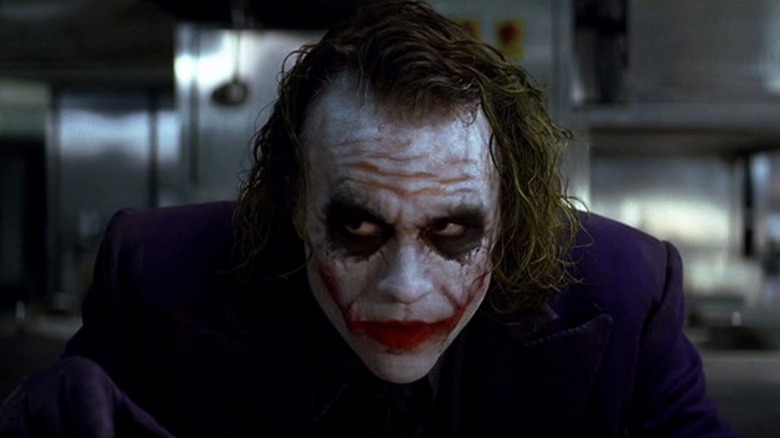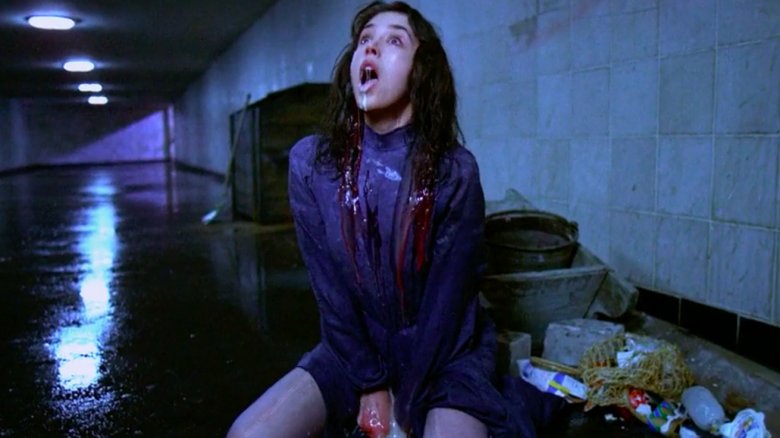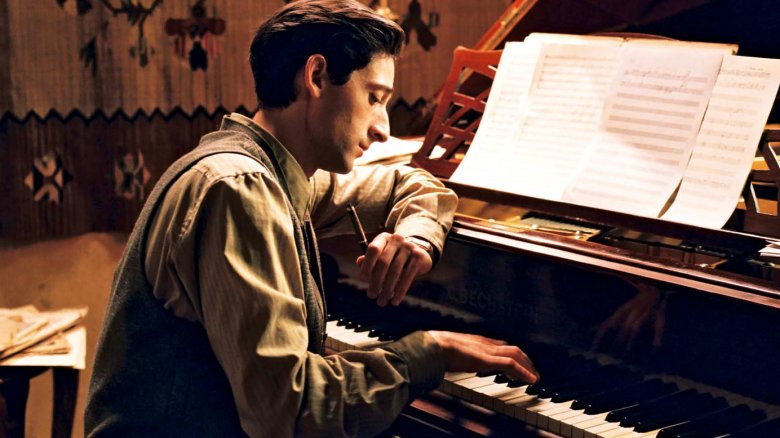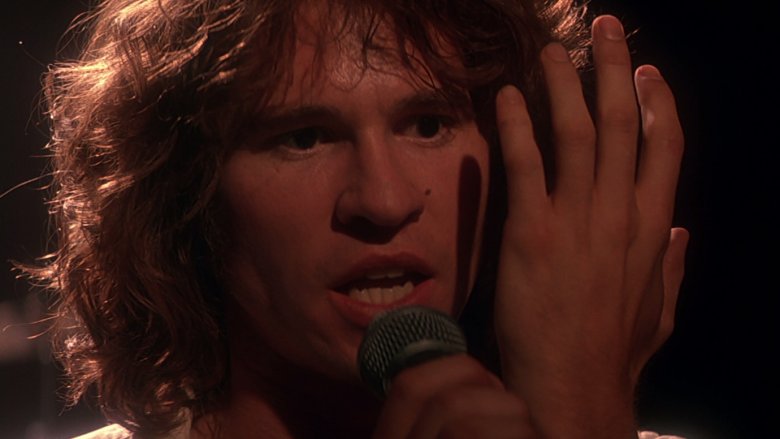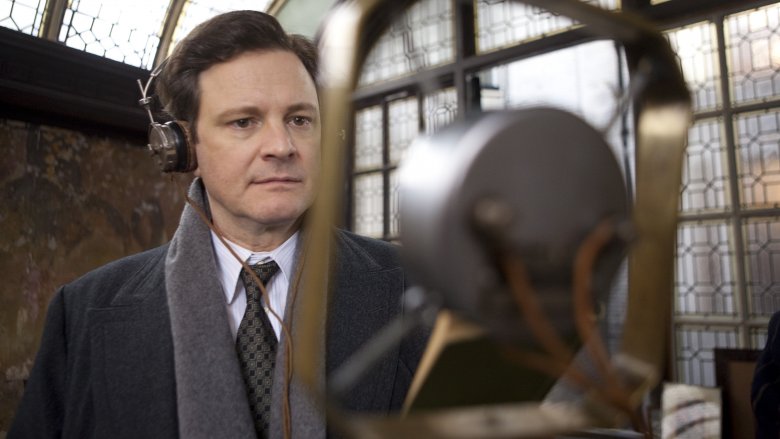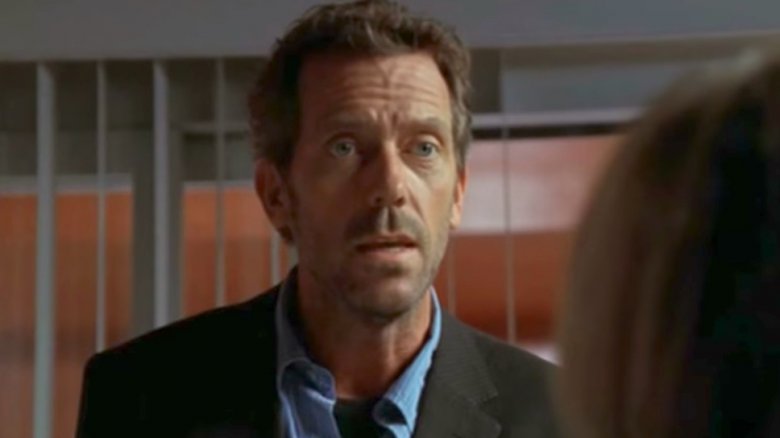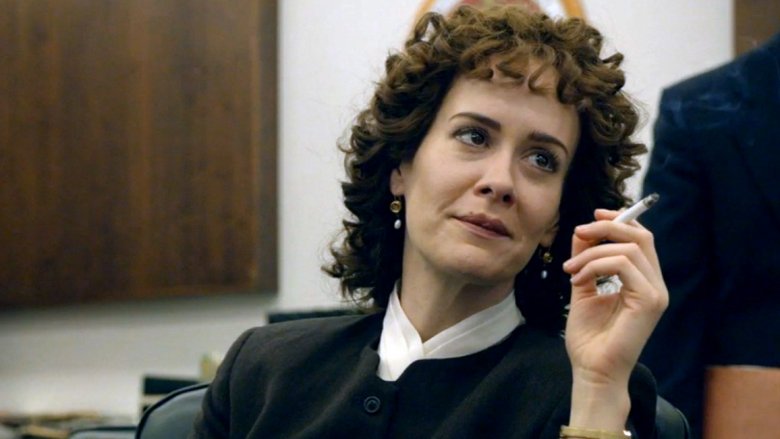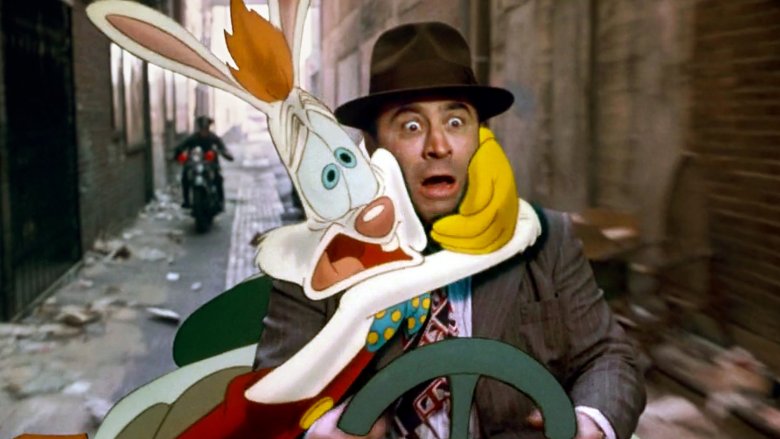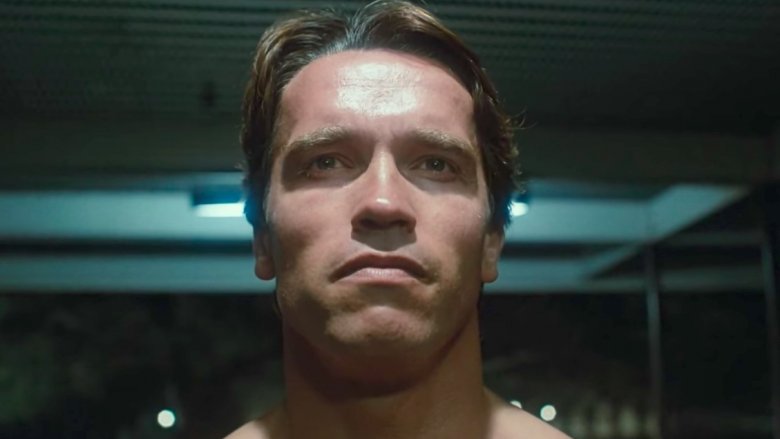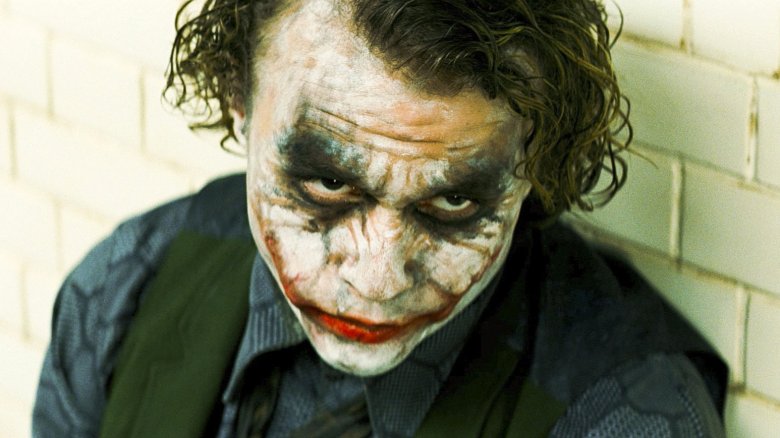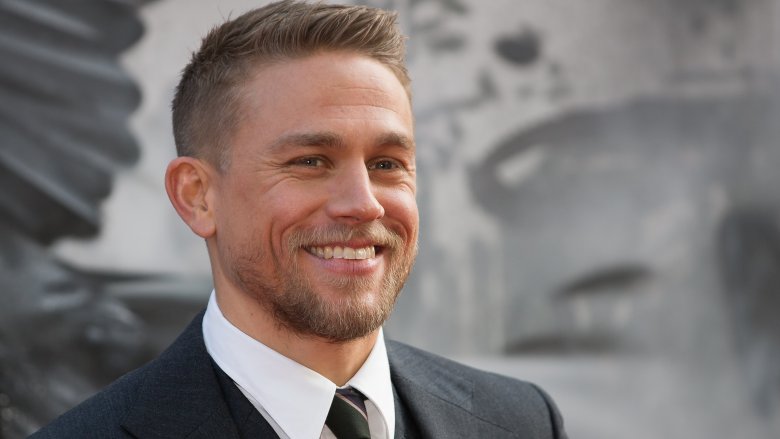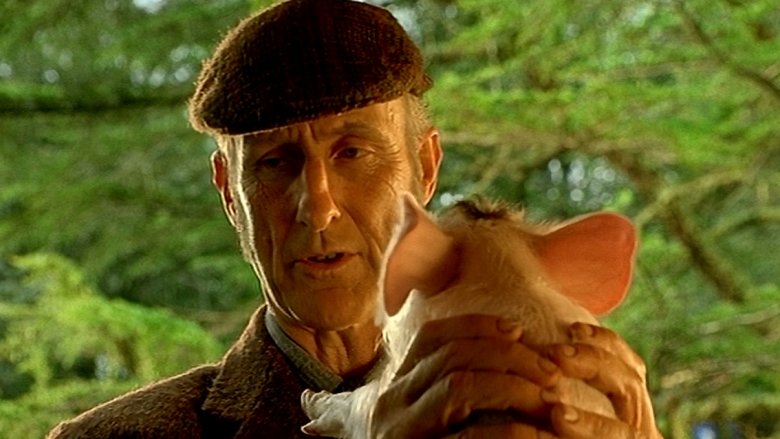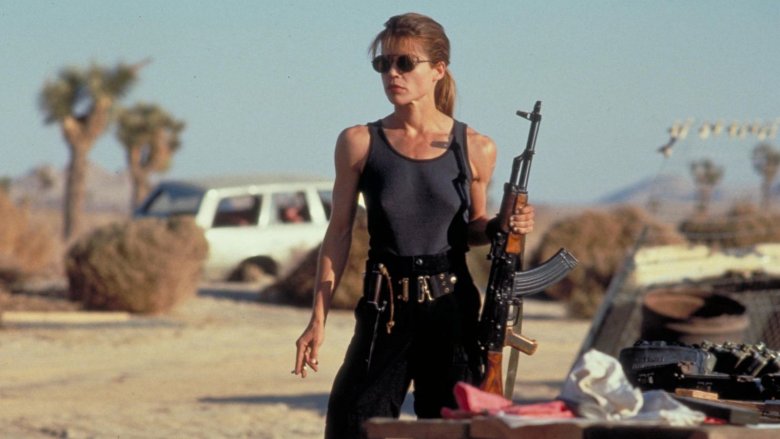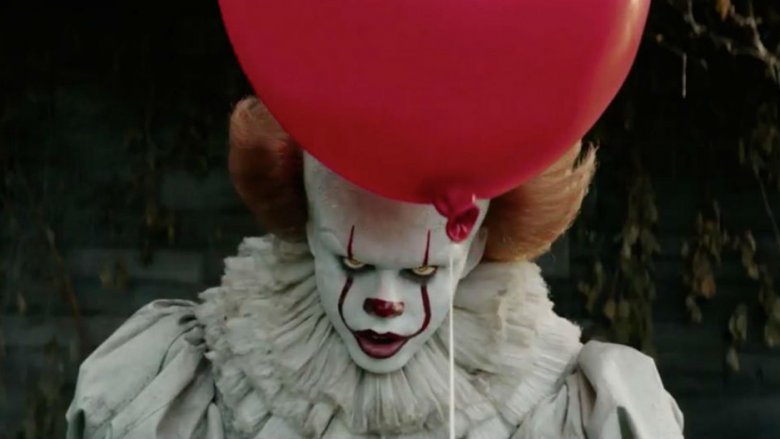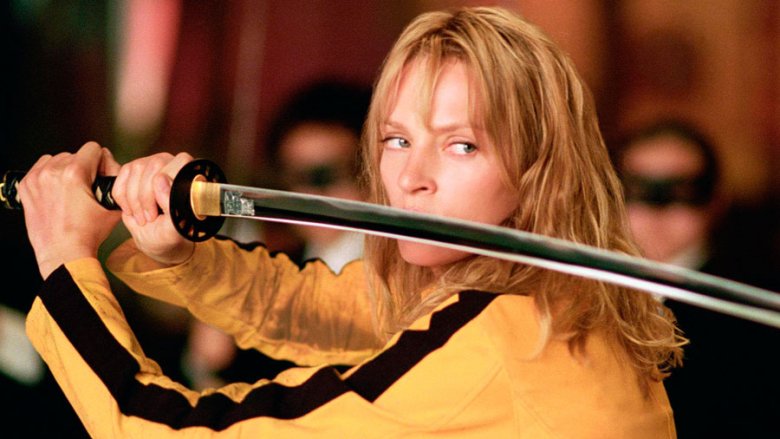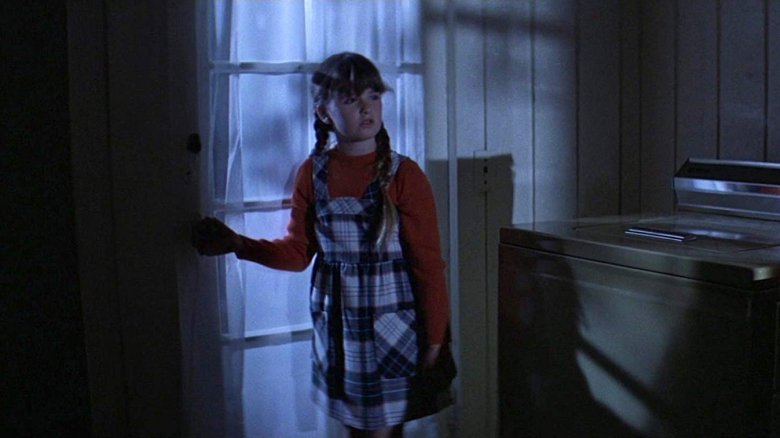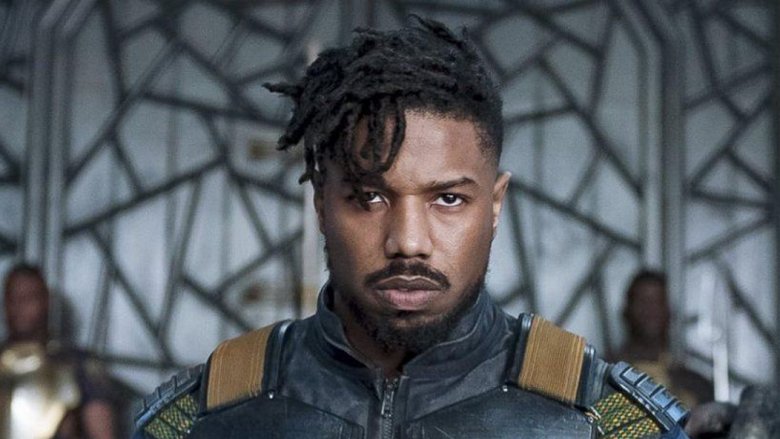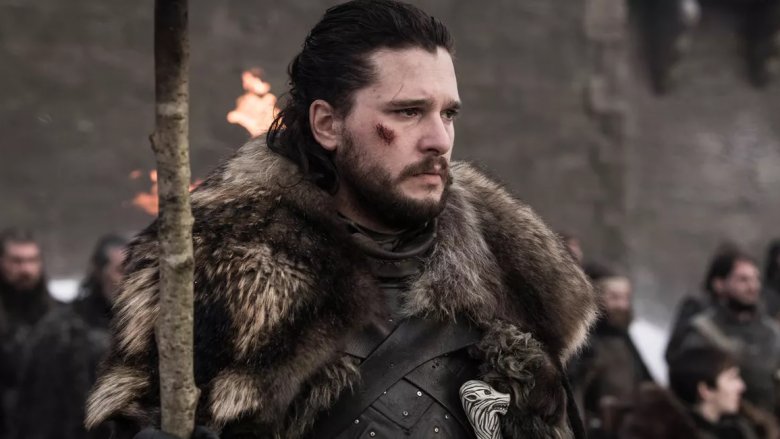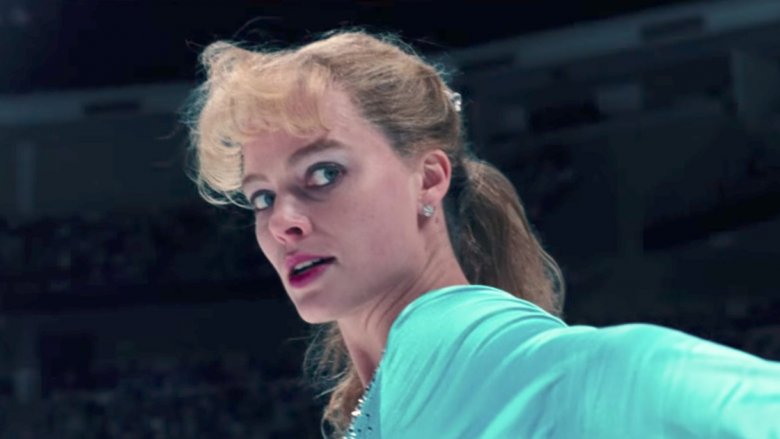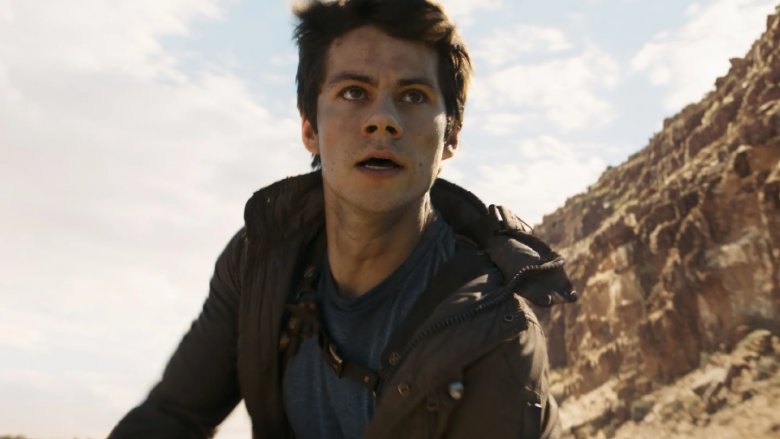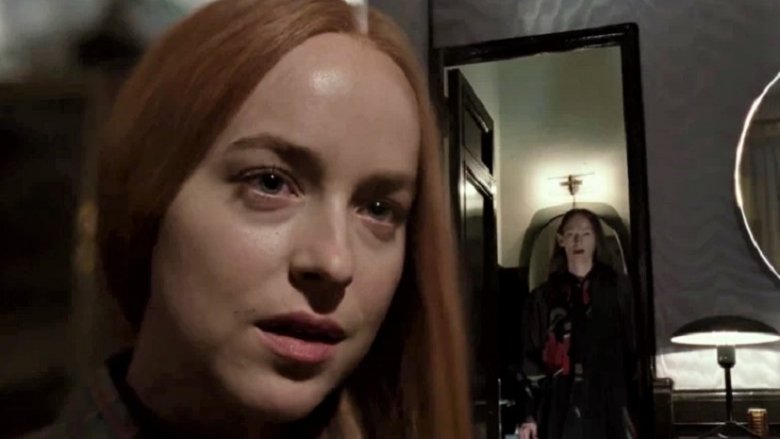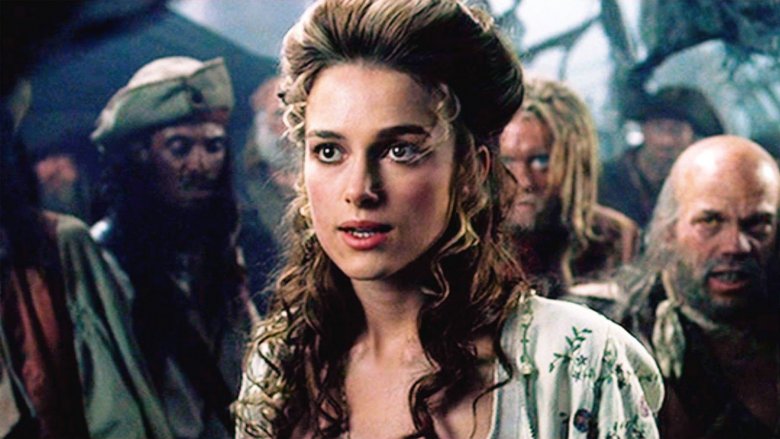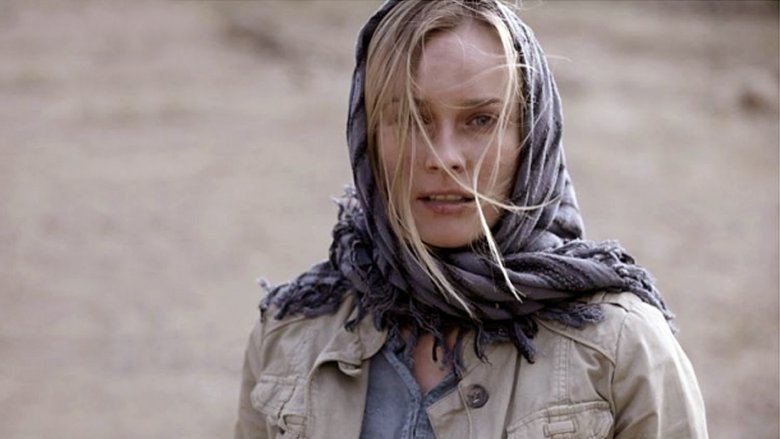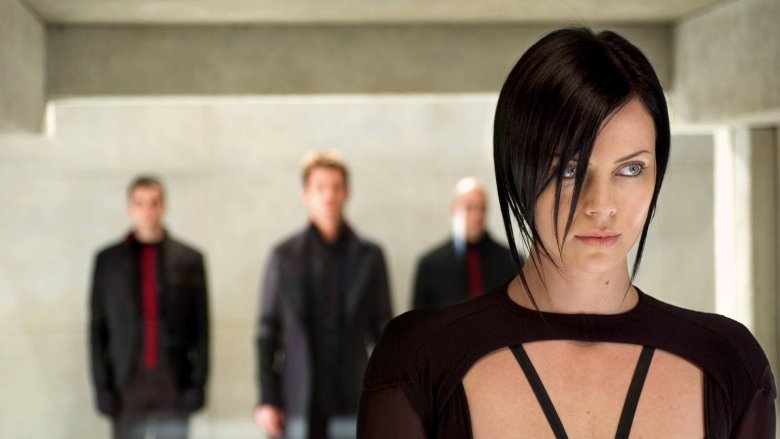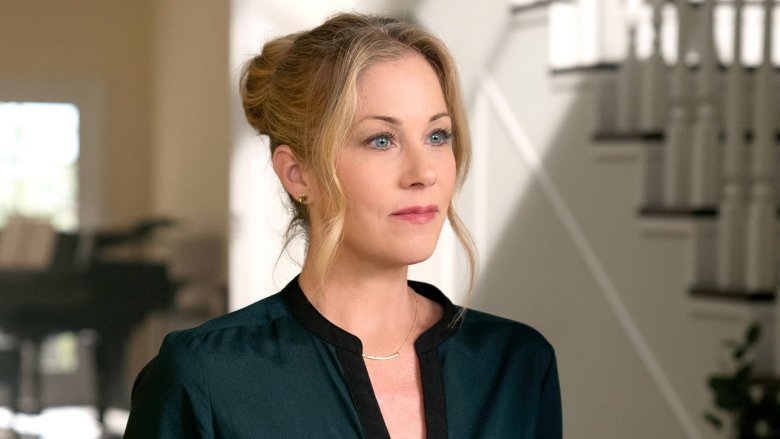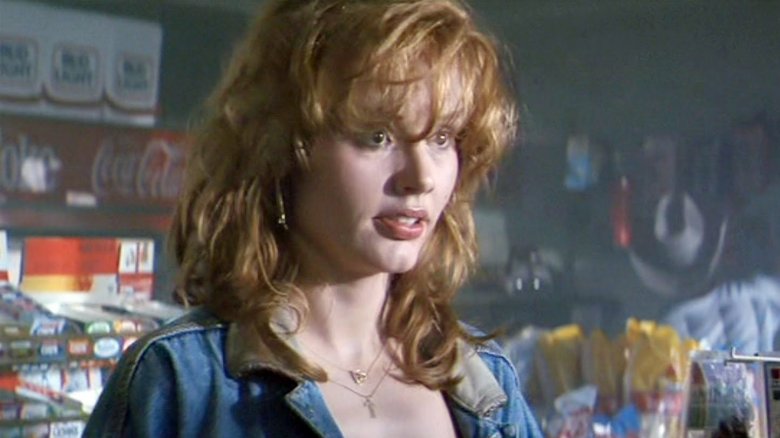Actors Who Were Never The Same After A Role
For people who've never done it, it can be easy to think of acting as being paid to pretend, but there's really a lot more to it — in fact, it can often be an all-consuming craft, and like anything that requires extreme effort, it's very possible to take things too far. It's a lesson that's been learned the hard way by generations of stars who dedicated everything they had to roles that demanded intense emotional and/or physical investment, and ended up taking things a step (or two) too far. With that in mind, we've rounded up a look at some actors who took a deep dive into their roles and were never the same after filming wrapped. These critically acclaimed, often award-winning performances are a delight to watch, but the experience of preparing for and recovering from them changed the actors forever.
Isabelle Adjani, Possession
Any horror buff knows the subway scene in Andrzej Zulawski's 1981 Possession to be one of the most horrifying, shocking moments of body horror to vomit all over the silver screen. (And if you haven't seen the film, buckle up, you're in for a treat.)
Isabelle Adjani won a César Award for her performance of Anna, but the intense physical and emotional demands of the role made for an extremely difficult recuperation. Adjani later told a French magazine that it took her "years of therapy" to get Anna out of her system, and that she would never again attempt another role like it.
Adrien Brody, The Pianist
Though Adrien Brody's physical transformation for 2002's The Pianist is obvious, the actor has also discussed the enormous mental and emotional strain of the role of Holocaust survivor pianist Wladyslaw Szpilman, for which he won the Academy Award for Best Actor in 2003.
To prepare, he told the BBC he gave up his apartment, sold his car, disconnected his phones, and moved to Europe. But it was the emotional effect of starvation that he found the most surprising and difficult challenge to deal with.
"I've experienced loss, I've experienced sadness in my life, but I didn't know the desperation that comes with hunger," he said. There were moments when he wasn't sure he'd get out of the experience with his sanity intact, and in the end, he said it took a year and a half "to settle back into things."
Johnny Depp, Fear and Loathing in Las Vegas
When Johnny Depp was approached with the project of Fear and Loathing in Las Vegas, he jumped at the chance to portray Hunter S. Thompson, one of his heroes and a fellow Kentuckian. To prepare, Depp basically moved into Thompson's basement, to study his mannerisms and lifestyle.
By the time filming began, Depp's uncanny portrayal had the cast and crew worried that he was in over his head. Depp and his costar Benicio del Toro were so committed to their performances that people wondered if they were in fact actually tripping on acid. Even a year after shooting had wrapped, Depp was still in full Thompson mode. He and Thompson remained close friends until Thompson took his own life in 2005, when Depp allegedly paid $3 million to shoot his cremains out of a cannon.
Val Kilmer, The Doors
To play rock legend Jim Morrison in Oliver Stone's 1991 movie The Doors, Kilmer started with the music, learning how to sing 50 of the band's songs. He reportedly spent hours in the studio poring over Morrison's vocal performances and watching endless footage of Morrison's interviews to get a sense of his personality and mannerisms.
On set, the cast and crew referred to him as Jim, and many claimed by the end of filming they were unable to tell the difference between Morrison's singing voice and Kilmer's. But when filming ended, Kilmer claimed he had to go to therapy to get Jim out of his system. Rock producer Paul Rothchild, who knew Morrison, claimed that Kilmer "knows Jim Morrison better than Jim ever knew himself."
Colin Firth, The King's Speech
In The King's Speech, Colin Firth plays future King of England George VI and has to give a number of speeches in addition to fulfilling a number of other royal duties. Because a film about man giving a flawless speech to an excited crowd of millions and then retiring to his giant castle to high five everyone he knows would be kind of boring, the film has a villain of sorts in the form of a near-debilitating stammer that ruins nearly every speech George gives until he hires a vocal coach. In real life, George suffered from an almost identical speech impediment, and never really ever got over it.
Firth worked closely with a voice coach and watched recordings of George VI speaking to better emulate both his speech patterns as well as his physical mannerisms and nervous tics. Firth immersed himself so deeply in the role that he admitted in an interview that he still occasionally lapsed into the stammer when speaking casually, even doing it during the interview itself. It's worth noting that this happened in May of 2011, a full eight months after the film premiered in September of the previous year.
Judging by how flawlessly he enunciated every syllable in Kingsman: The Secret Service while punching people in the neck with his gun in 2014, we're assuming that Firth has since gotten over the stammer.
Hugh Laurie, House
During the casting process of House, the producers famously explained that they wanted a "quintessentially American actor" to play the eponymous Dr. House shortly before hiring British actor Hugh Laurie. Laurie apparently got the role because his American accent on his audition tape was so convincing nobody realized he was British to the point that Bryan Singer, the director of the pilot episode, is said to have pointed to the tape and said, "See, this is what I want: an American guy."
To this end, Laurie also really went for it when it came to walking with a limp to portray the cane-using House. So much so, the actor still walked with a limp in 2015 after eight straight years of pretending to need one on set. Laurie reportedly attempted to ease the load on his leg by occasionally switching which leg had it, something he claims nobody ever noticed or called him on during filming or in the years since show ended.
Apparently Laurie's acting is so good he can make people overlook his British accent as well as the fact he didn't always limp with the same leg despite that being a defining aspect of the character. That's talent.
Sarah Paulson, The People vs. O.J. Simpson and American Horror Story
Sarah Paulson earned no shortage of acclaim for her starring roles on The People vs. O.J. Simpson and American Horror Story, but both parts required her to smoke. Kind of a problem when in real life, Paulson doesn't smoke — or at least she didn't until she started lighting up multiple times a day on the set.
In an interview with Stephen Colbert, Paulson admitted that after the initial disgust of smoking for the first time wore off, she started to crave cigarettes for real, becoming impatient to film scenes that required her to smoke. In some circles this would be called "method acting" since the person Paulson was portraying (Marcia Clark) was a well-known chain-smoker in real life. Unfortunately, it's also known as being addicted to cigarettes.
Paulson described the whole ordeal as "a real situation," which is code for something that would ordinarily be a problem for someone who isn't a star who can pay someone to slap cigarettes out of their mouth after filming wraps.
Bob Hoskins, Who Framed Roger Rabbit
Bob Hoskins had an incredible career, but to mainstream audiences, he'll always be best remembered and loved role for his portrayal of alcoholic gumshoe PI Eddie Valiant in Who Framed Roger Rabbit. Along with pretending to have an awesome name during production, Hoskins also had to spend hours a day talking to and acting alongside fictional characters who weren't really there.
Hoskins would later note that he "learn[ed] how to hallucinate" that Roger and the other characters he starred alongside were actually there to cope with the dissonance of constantly hearing their voices but never seeing them while filming. When shooting finally ended Hoskins found himself constantly talking to himself and even hallucinating that Roger was sitting in the same room, prompting his doctor to advise him to take a break from acting.
Arnold Schwarzenegger, various roles
Despite living and working in America and even running a small part of it for a few years, Arnold Schwarzenegger still speaks with the same thick Austrian accent that endeared him to us when he was punching out the Predator in the '80s. This particular quirk of the Governator's life has mystified and perplexed fans for years because surely by now, he's been in America long enough to lose his accent.
Well apparently he has. In an interview with The Daily Mail following the release of Terminator Genisys, the T-800 revealed that he's perfectly capable of speaking English sans his accent but doesn't because fans expect him to speak like he does in all his movies. This makes sense, as in his own autobiography, Schwarzenegger notes that he had hours of personal lessons with acclaimed dialect coach Robert Easton shortly after coming to America to learn how to enunciate more clearly.
It's hard to even be mad at Schwarzenegger for this apparent deception because let's face it, if any one of us had an excuse to talk with an accent that made everything we said sound like a kickass one-liner from an action movie, we'd take it.
Heath Ledger, The Dark Knight
Heath Ledger's performance as the Joker in The Dark Knight was so chilling that it landed him an Oscar for Best Supporting Actor — tragically, it was a posthumous award, as Ledger had died of an accidental drug overdose in January 2008.
In the years that followed his premature death, rumors swirled that the preparation for the role had contributed to Ledger's demise. Although they've been angrily disputed by members of his own family, it's hard not to view Ledger's pretend plunge into madness as being unhelpful to his overall well-being. Before filming began, he put himself in strict isolation, keeping a diary of disturbing images to enter "the realm of a psychopath." Even when he wasn't on the set, Ledger was still struggling to shake the Joker. "I probably slept two hours a night," he told The New York Times. In fact, it was a mixture of painkillers and sedatives that ultimately caused Ledger's death.
Charlie Hunnam, American TV
Charlie Hunnam has played everything from a soccer hooligan to a giant robot pilot, and he's known for his extraordinarily convincing American accent, making him one of a handful of British actors able to convincingly pass as American in his various roles.
Years of living in the States, however, took their toll on Hunnam's actual, real-life accent, and when he appeared on TV in 2013 to plug a movie on Conan, he spoke with a bizarre amalgamation of various American dialects that prompted confusion and mockery, especially in Hunnam's native U.K.
Hunnam spoke about this in 2017 when he admitted that his accent — or lack thereof — had gotten so bad that when he signed on to appear in King Arthur: Legend of the Sword, he had to hire a dialect coach to re-learn how to speak the King's English. He went on to play a French convict after that, so it's probably safe to say his dialect struggles aren't going to get any easier anytime soon.
James Cromwell, Babe
James Cromwell is the kind of actor whose appearance is so distinctive most people know his face, but not his name. He scored one of his few leading film roles in 1995's Babe, in which he was upstaged by a talking pig — but it all worked out, given that it was not only a massive hit, but it changed Cromwell's life, turning him from a guy who occasionally flirted with vegetarianism into a vegan.
Cromwell has called the experience of making the film a turning point in his life, recalling in an interview with Vice that he was profoundly affected by seeing a small piglet react to being put onto a patch of grass. "When that little pig was put down on that big pitch and saw the blue sky and the green grass and the sea, that pig just took off," he recalled. "I said, I don't want any part of this. I am out."
Cromwell has been an ardent supporter of animal rights ever since — especially pigs, which understandably, now have a special place in his heart thanks to Babe and its sequel.
Linda Hamilton - Terminator 2: Judgment Day
By the time James Cameron got around to directing his sixth film, he'd developed quite a reputation for delivering thoughtful, effects-driven science fiction with strong female protagonists. He'd also developed a rep for putting big guns in the hands of those protagonists and delivering larger than life action scenes to boot. Little did we know, but the films that led up to Cameron's Terminator 2: Judgment Day would prove little more than a warmup.
Cameron's sequel to The Terminator arrived in theaters with a level of fanfare all but unseen at the time. Shockingly, it managed to live up to and even surpass those lofty expectations: The set pieces were bigger, the effects were unlike anything viewers had ever seen, and the ass-kicking heroine in the middle of the action was as tough as any in the history of cinema.
Linda Hamilton reprised the role of Sarah Connor, giving every bit of herself to the role and delivering one of science fiction's most memorable performances in the process. As it happens, "every bit of herself" included sacrificing her hearing. While shooting a gunfight inside an elevator, she forgot to put her protective ear plugs back in between takes. The resulting echo was quite literally deafening, and left Hamilton with permanent hearing damage.
Bill Skarsgård - It
Occasionally, an actor can go so deep into a role that it's hard for them to let go of the character once the film has wrapped. In the case of Bill Skarsgård, it seems that the character didn't want to let go of him. Unfortunately for the young actor, that character was one of the most terrifying that has ever graced the silver screen. The baddie in question? None other than the shape-shifting clown/beast known as Pennywise from Stephen King's It.
It was one of the most successful films of 2017, and stands as one of the best horror films of the past decade or so. At the heart of the film is a truly unnerving performance from Skarsgård in the pivotal role of Pennywise, an evil entity that feeds on fear, taking the shape of the thing that scares you most ... before it feeds on you. Needless to say, Skarsgård had to go to some dark places to get into to the role, which he likened to "being in a very destructive relationship." He tried to dump the character once the cameras stopped rolling, but Pennywise proved too hard to get over. Per the same interview, Skarsgård claimed Pennywise quickly began haunting his dreams, and was the source of nightmares for months. Of course, Pennywise was the source of nightmares for most viewers who saw It, so that only feels fair.
Uma Thurman - Kill Bill films
Throughout film history, directors have latched on to specific actors as inspiration for some of cinema's most unforgettable works. Scorsese had De Niro, then DiCaprio. Bergman had Ullman. Burton had Depp. Carpenter had Russell. Though Quentin Tarantino has several fiercely loyal actors devoted to his various cinematic visions, he's claimed Uma Thurman as one of his greatest muses since the pair first worked together on 1994's Pulp Fiction.
Though they became fast friends on the set of that film, they didn't actually work together again until 2003's epic kung fu-flavored western fantasia Kill Bill, a film Tarantino claims Thurman not only inspired, but helped create. In fact, the press junkets for the film felt a bit like a love-in for the duo. Still, there was one fateful misstep during Kill Bill's production that almost cost the pair their friendship, not to mention Thurman's life.
As you probably know by now, Tarantino tragically insisted that Thurman perform her own stunt work for a scene that involved the actor driving into a curve. The stunt didn't go according to plan, and Thurman found herself in the midst of a life-threatening car crash. Though she survived, Thurman was not unscathed, suffering contusions, a concussion, and severe leg/knee damage that bothers her to this day — not to mention likely wishing she'd played muse to a less frenetic filmmaker.
Kyle Richards - Halloween
Though she's probably better known for her ongoing role in TV's The Real Housewives of Beverly Hills, legions of devoted horror buffs will always know Kyle Richards as little Lindsay Wallace — a.k.a. one of the precocious youngsters Jamie Lee Curtis' Laurie Strode is tasked with protecting from her big brother/mask wearing psychopath Michael Myers. Though Richards' character survived the film relatively unscathed — and she can include one of the greatest horror films ever made among her many screen credits — the experience left a huge impression on the young actor, who was just nine years old at the time of filming.
Michael Myers in particular left the most lasting mark. Though Richards fondly remembers her time on set, and playing cards with Nick Castle — the actor who played Meyers — her position quickly changed once she saw the finished film in all its glorious menace. In more recent interviews, Richards has claimed seeing herself the finished film left her deeply shaken and believing Myers was lurking in every dark corner of her childhood home. It got so bad for Richards that she insisted on sleeping in her mother's bed until she was 15. Though hers is an extreme case, we're guessing Kyle Richards wasn't the only kid traumatized by John Carpenter's genre masterpiece.
Michael B. Jordan - Erik Killmonger (Black Panther)
One of the few criticisms leveled at Marvel Studios over the last decade is that the Marvel Cinematic Universe doesn't have enough memorable villains, but 2018's Black Panther bucked that trend. Michael B. Jordan's Erik Killmonger was a hit with Marvel fans, who turned out in huge numbers all across the world — Black Panther earned over a billion dollars globally. Jordan put in a terrific performance as the war-hungry Wakandan usurper, and numerous fans actually sympathized with his plan (using Wakanda's advanced tech to fight back against the oppression of African people worldwide). It was the first time Jordan had played a villain, however, and it took a toll on him mentally.
"I never was in a character for that long of a period of time and was, I guess, that dark, that lonely, that painful," Jordan said during an appearance on The Bill Simmons Podcast (via ComicBook.com). The actor tried to get right back to "business as usual" after he was done with Black Panther, but he needed the help of a therapist to get out of the Killmonger mindset. "I found myself kind of in the routine of being isolated and went out of my way to make sure I was by myself," the Creed star continued. "Once I got finished wrapping the movie, it took me some time to talk through how I was feeling and why I was feeling so sad and like a little bit depressed."
Kit Harington - Jon Snow (Game of Thrones)
Game of Thrones catapulted a handful of young actors to levels of fame they couldn't have anticipated when they showed up to audition, but few had to deal with quite as much pressure as Kit Harington. Over the course of eight seasons his character essentially became the show's protagonist, and by the end, being Jon Snow put enormous strain on him. Harington's mental health really started to suffer around the time of Snow's death and resurrection.
"It wasn't a very good time in my life," he told Variety. "I felt I had to feel that I was the most fortunate person in the world, when actually, I felt very vulnerable. I had a shaky time in my life around there — like I think a lot of people do in their 20s. That was a time when I started therapy, and started talking to people. I had felt very unsafe, and I wasn't talking to anyone." Sadly, the show coming to an end doesn't appear to have helped matters.
Not long after the final season of Game of Thrones finished, Harington checked into "wellness retreat," a rep revealed. "Kit has decided to utilize this break in his schedule as an opportunity to spend some time at a wellness retreat to work on some personal issues," the spokesperson confirmed. According to a Page Six inside source, the actor sought help for "stress and exhaustion and also alcohol" after wrapping the HBO epic.
Margot Robbie - Tonya Harding (I, Tonya)
She came across pretty unhinged when she debuted as Harley Quinn in 2016's Suicide Squad, but Margot Robbie apparently had a much harder time making her follow-up film, 2017's I, Tonya. Robbie's turn as vilified figure skater Tonya Harding won her plenty of plaudits, but the role seems to have come at a cost: She needed weekly MRI scans after herniating a disc in her neck, and her physical health was actually the least of her worries. The Oscar nominee got so lost in the role that the lines between work and real life became dangerously blurred at times.
"I had lost my mind," Robbie told Grazia, explaining the impact this had on her co-star, Sebastian Stan. "I genuinely thought we were these people and we were off the set, running down the street screaming at each other and the cameras are running after us. I think I was screaming something about needing to go to hospital because my hand was broken. It wasn't, but I was so caught up in the moment. And Sebastian was like, 'Margot, where are you going?' He went to pick me up because I was continuing to tear down off set and I turned and punched him in the head."
Stan portrayed Jeff Gillooly, Harding's onetime husband. According to Robbie, throwing herself into this "abusive relationship" deeply affected her. "[I] found it emotionally traumatic," she admitted (via The Hollywood Reporter).
Dylan O'Brien - Thomas (Maze Runner: The Death Cure)
Looking at Dylan O'Brien now, you'd never guess he was involved in a near-tragic on-set accident a short few years ago. In 2016, the actor suffered a concussion and a nasty facial fracture when a stunt he was performing for Maze Runner: The Death Cure went terribly wrong — he was reportedly thrown from one vehicle and hit by another. His memory of the immediate aftermath is a little fuzzy, but the Teen Wolf star remembers being in a "really fragile, vulnerable state" following the accident.
"I didn't want anyone in my business and you get angry about it, and you're already angry," he told People. "I've gotten to a place where I'm okay with it, but it was definitely a rough year." O'Brien credits his girlfriend and family for his remarkable recovery. He's now back making movies, something he thought he'd never do again. "The first time I saw my face I was like, 'That's it,'" he said. "Spending that six months out of it and in recovery and so far away from it, you're in a state of questioning everything. I absolutely went through a period of not knowing what my future was going to be."
The road back was tough, but some good came from O'Brien's life-changing accident. "I learned a lot about a traumatic situation and what it does to you," the resilient actor said. "It really brings you closer to your family and your loved ones."
Dakota Johnson - Susie Bannion (Suspiria)
She's best known for playing doe-eyed protagonist Anastasia Steele in the much-derided Fifty Shades of Grey films, but they were always just a stepping stone for Dakota Johnson. The actress used the so-called "mommy porn" franchise to put herself on the map, opening doors to more taxing roles in movies like Luca Guadagnino's 2018 reboot of '70s horror classic Suspiria. Johnson plays aspiring ballet dancer Susie Bannion in the remake, which was so dark that it left her needing professional help. "No lie, [Suspiria] f***** me up so much that I had to go to therapy," the actress revealed to Elle.
Johnson was asked to clarify her comments during a press conference at the Venice Film Festival, where she was supporting Guadagnino's movie. While she made it clear that she "was not psychoanalyzed" at any stage and that the Suspiria shoot "was not traumatic" in the traditional sense, she confirmed that she did indeed turn to her therapist after the movie wrapped. "I find sometimes when I work on a project and — I don't have any shame in this — I'm a very porous person and I absorb a lot of people's feelings," she said (via Entertainment Weekly). "When you're working sometimes with dark subject matter, it can stay with you and then to talk to somebody really nice about it afterwards is a really nice way to move on from the project. My therapist is a really nice woman."
Keira Knightley - Elizabeth Swan (Pirates of the Caribbean)
She gave a performance beyond her years in the first Pirates of the Caribbean movie, which is why it's easy to forget that Keira Knightley was only 17 years old in 2003's The Curse of the Black Pearl. Disney's swashbuckling epic (combined with her role in smash hit rom-com Love Actually) made the teen a household name. Getting fast-tracked to Hollywood's A-list is great in theory, but for Knightley, it was the start of a whole host of mental health issues.
"It's amazing looking back at it from the outside — you're like, 'Whoa, that was hit after hit,'" she said on THR's Awards Chatter podcast. "But, from the inside, all you're hearing is the criticism. I literally felt like I was worthless." Knightley took a year away from the industry after becoming so famous so quickly. Fear of being hounded by paparazzi turned her into a virtual recluse, staying holed up in her home for three consecutive months at one stage. According to the BBC, her rapid rise to fame left her with PTSD.
Knightley returned to work, but her impostor syndrome remained, even after she was nominated for an Oscar in the Best Actress category for 2005's Pride and Prejudice. She reportedly underwent hypnotherapy to prevent panic attacks prior to the 2008 BAFTAs, recalling, "I felt pretty much like actually I didn't exist and I was this weird creature with this weird face that people seemed to respond to in quite an extreme way."
Diane Kruger - Elsa (Special Forces)
She's best known to English-speaking audiences for her supporting role in Quentin Tarantino's World War II bloodbath Inglourious Basterds, but Diane Kruger has actually plied her trade in a number of Hollywood movies. She appeared alongside Nicolas Cage in 2004's National Treasure, and shared the screen with Liam Neeson in 2011's Unknown. She's also a star in France (the mutli-lingual German-American moved to Paris as a youngster to pursue modeling), where her most taxing movie to date was released.
In 2011, Kruger portrayed a French reporter who gets abducted by terrorists in Special Forces. Speaking to Gotham magazine, she revealed that she was never the same afterwards. "I researched the role for four months, interviewing female journalists who were kidnap victims, and I think it's changed me as a person," she said (via Zimbio). "It's as though I felt quite ignorant before this... I always thought I had a pretty accomplished life: a famous model who speaks three languages and keeps a place in Paris. This role has certainly put me in my place a little bit."
Special Forces didn't go over well with critics Stateside, but it was still a life-changing experience for Kruger. As well as being deeply affected by the stories of the victims she interviewed during her prep, she also developed a new-found respect for journalists. As she told The Scotsman, "I never realised what danger goes into people putting their lives out there to get us these stories."
Charlize Theron - Æon Flux (Æon Flux)
Charlize Theron has appeared in numerous physically demanding roles since 2005's Æon Flux, but her attitude toward stunt work changed drastically because of this critical and commercial flop. The film follows underground operative Æon Flux (Theron) as she goes about toppling a totalitarian government four hundred years in the future. Theron pushed herself to her absolute limits for the role, and it almost backfired big time during a botched back flip — she landed on her neck and suffered a herniated disc, halting the production for two months.
"That injury scared me — I was almost paralyzed," she told Total Film magazine (via Express). "I've definitely come to a place in my career where I would be the first to say, without feeling guilty or not badass enough, 'You know what? I don't need to do this.' It's wise because I felt guilty for shutting down a production 10 days into shooting for eight weeks." Theron apparently suffered from the after effects of the injury for the best part of a decade.
In 2013, she reportedly underwent surgery to finally correct the problem. Theron wore a neck scarf to Variety's 5th Annual Power of Women event that year, but it couldn't totally conceal the small scar on her neck. "It's been bothering her a lot lately so she had surgery to correct it and they had to go through her neck," an insider told Us Weekly. "She will be totally fine."
Christina Applegate - Jen Harding (Dead to Me)
Netflix renewed Christina Applegate's Dead to Me for a second season after the dark comedy series proved popular with critics and audiences. She would have no doubt welcomed this news, but judging by comments she made about the making of the show, the prospect of a second season probably filled her with some trepidation, too. Applegate stars as Jen Harding, a woman getting through the death of her husband (tragically killed in a hit and run) with the help of her free-spirited friend Judy Hale (Linda Cardellini). When she sat down with Variety in 2019, Applegate revealed that the role took a physical and emotional toll on her.
"I was in traction for a week because I hadn't danced in 10 years before that day," she said of one particularly taxing scene. "So it hurt. This old body? This 47-year-old body can't do it anymore." It was the mental side of the role that wound up having a lasting effect on Applegate, however. The Anchorman star revealed that she drew on her own personal losses to get to where she needed to be for her scenes, and it left her needing therapy. "It tapped into some stuff that I had to face," she said. "Did I start therapy after I shot the show? Yes, absolutely. To like finally talk about the stuff that hurt you in your life — and heal from that? I think it's [a] really beautiful thing."
Geena Davis - Thelma Dickinson (Thelma and Louise)
Geena Davis wanted the part of Thelma in Ridley Scott's Thelma & Louise so badly that she had her agent call the director every single week for a full year. Eventually, that persistence paid off. The film would prove a turning point in Davis' career — not because it was a critical hit, but because it inspired her to create change. "When the movie came out and I saw the reaction women had, it was night and day: completely different from anything that had ever happened before," she told The Guardian. "Women wanted to really talk about how it impacted on them... That really struck me, and it made me realize how few opportunities there are to feel inspired by the female characters we watch. That changed everything for me."
Davis came to the conclusion that change had to start from the bottom up, and formed the Geena Davis Institute on Gender in Media, which strives to highlight the importance of gender balance in entertainment and media that targets young children, specifically those aged 11 and under. According to the Institute's research, the ratio of males to females in the media is 3:1. Davis is determined to change that, just like Thelma & Louise changed her. "It absolutely changed my life and has driven my commitment to help empower women and girls ever since," she told CNN. "It dramatically took me off in a direction that I couldn't have anticipated."
